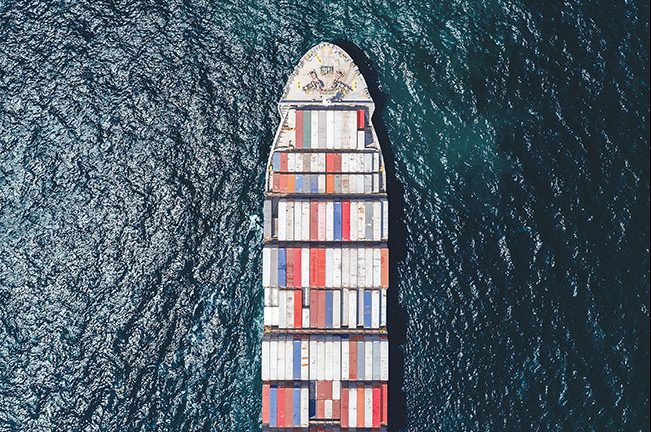
Features
Ports
Empowering ports within Canada’s sustainable recovery
December 20, 2021 By Debbie Murray
 Photo: Adobe stock image
Photo: Adobe stock image Supply chains have never been more in the spotlight. Consumers, seeing rising costs, empty shelves and images of many vessels at anchor, are now beginning to realize the relevance of ports and supply chains to their daily lives. And for Canada Port Authorities (CPAs), who are resilient and didn’t skip a beat over the past 18 months of COVID, this clout is coming at a critical time.
This is a time of transition, urgency and opportunity for ports, but not just because of the impacts of the pandemic and supply chain glitches.
Transition
This is a time of transition because of how the world is responding and evolving to the demands of climate change and decarbonization. This shift is manifesting in marine transportation and supply chains globally, where the momentum towards fuels and fleets of the future is gaining steam. These trends, and the trade-enabling role of ports, are driving the need for port infrastructure that is built for Canada’s net-zero trading future.
Urgency
The urgency is that infrastructure takes time and the window for ports to establish the infrastructure needed to receive larger and more advanced ships, as well as bunker and export these future fuels, is a matter of only a few years. While shipowners are replacing their assets with more efficient vessels, ports around the world that were already innovating pre-pandemic have accelerated their responses. Governments globally have pledged additional support and stimulus for port infrastructure to build back better to meet the demands of sustainable shipping. Canada can’t be left behind.
Opportunity for Canadian ports
The opportunity for CPAs already operating sustainably is to move quickly to further build the strategic Canadian port infrastructure needed for net-zero shipping. The energy transition will rely on shore-side port infrastructure to support the new fuels such as green hydrogen, and technologies such as digitalization and electrification, so that global supply chains are moving to in the quest for sustainability and net-zero.
RELATED: New container cranes installed at the Port of Vancouver
Canada’s ports have a short time frame to prepare for these changes, and our offer is to work with the government on the policy frameworks to do so. Specifically, we are asking the federal government to:
- Increase borrowing limits within an accelerated time frame to provide CPAs with access to available private capital required to meet port infrastructure needs;
- Allow CPAs to access Canada Infrastructure Bank Funds for all infrastructure projects, regardless of size or value; and
- Enhance support for infrastructure projects by providing more funding to the National Trade Corridors Fund, which continues to be a highly effective mechanism for infrastructure funding.
Canadians are now looking to the future and how we will emerge and prosper. The COVID-19 recovery is a unique and critical opportunity to transition or even catapult Canada into the position of global leader in green, inclusive, digital, and resilient port supply chains. The recovery will require trade and global connections to build wealth. And, Canada Port Authorities, empowered with enhanced financial instruments, can be central to facilitating our country’s sustainable recovery.
Debbie Murray is the acting president for the Association of Canadian Port Authorities. This op-ed was originally published by the Association of Canadian Port Authorities.
Print this page